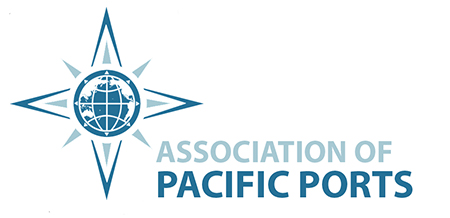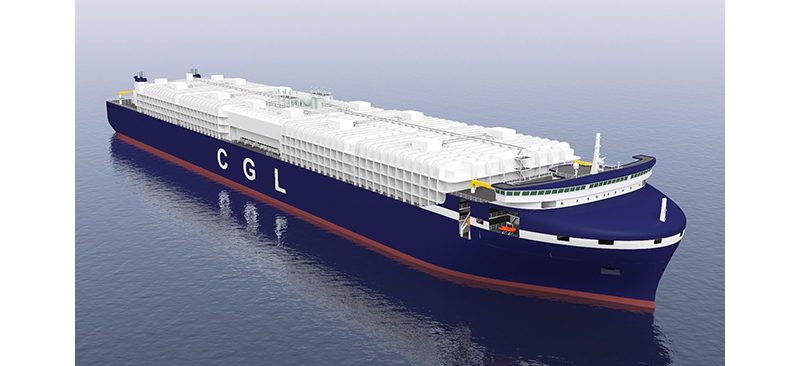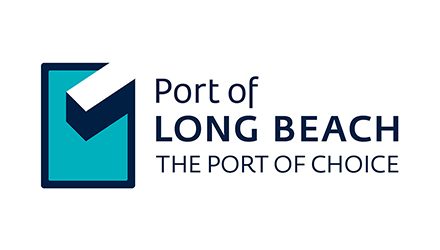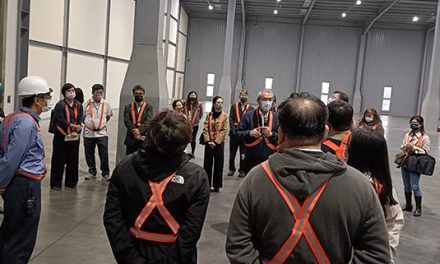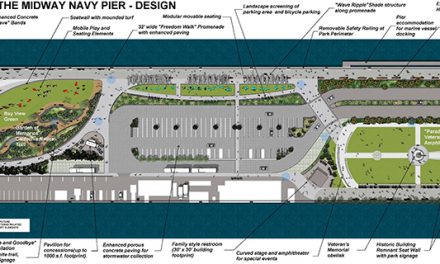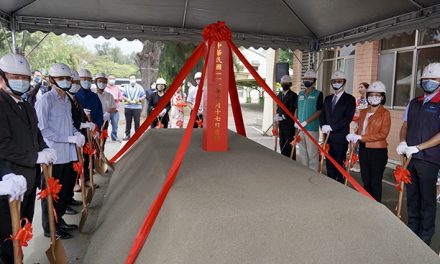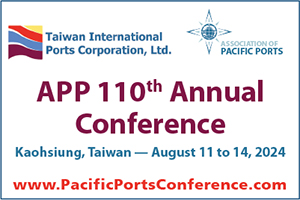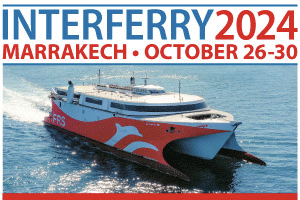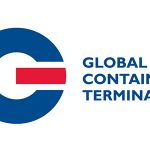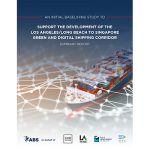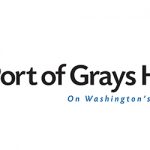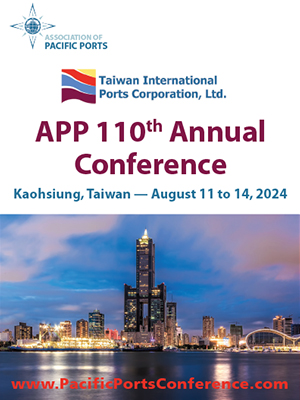U.S. ports are shifting more of their energy consumption to propane, a trend not likely to decline anytime soon. Those using propane embrace this fuel because it has three unimpeachable virtues: it’s affordable; it’s clean; and it’s produced entirely in the U.S.
Propane is commonly used in 48 million households for space and water heating, cooking, and as an engine fuel. It’s also widely used on farms (approximately 800,000 of them), and in more than 500,000 forklifts. For ports, the long list of applications includes powering forklifts, port tractors, and back-up power generators, as well as for cold ironing, and as fuel for barges and large carriers of LPG.
In the near future, ports will be able to shift to propane in some applications where diesel is used today. The long list of settings where propane will be extending its reach incudes reach stackers; port-to-rail equipment; empty container handlers; rubber tyre gantry cranes; drayage trucks.
Why exactly are ports making the transition from dirty fuels to a clean fuel such as propane? The most basic answer is a simple one: propane helps improve air quality. When measured by scientists, propane does better than gasoline on GHGs: 12 percent less with terminal tractors, and with light duty vehicles (based on medium-duty applications). It is noted that any GHG reductions need to be quantified as “compared to older diesel engines”. All modern compliant MD & HD diesel engines meet the same emissions levels (GHG, HC, NOx, etc.) as their spark ignited counterparts.
Propane is being used to fuel resilient, low-NOx generators for backup and in prime power for cold ironing, charging and other large industrial applications. One key factor that makes propane attractive is that it can also come from organic and renewable sources. It’s non-toxic and does not contaminate air, soil, or water resources.
There are a host of environmental benefits which are top-of-mind for ports. Three of the most important such advantages are lower particulate matter (PM); lower nitrogen oxide (NOx) emissions; and lower sulfur oxide (SOx) emissions. Forklifts powered by propane emit 76 percent less SOx than the electricity drawn from the grid. With the onslaught of climate change, the choice has become clearer, especially when the facts about propane emissions are compared with the total emissions generated by diesel, or by gasoline, or by electric power that’s generated in a coal-fired or gas-fired power plant.
Sensing the pressing need for the change at ports, the US Environmental Protection Agency (EPA) published “The National Port Strategy Assessment” in 2016. The document is important because it was hyper-focused on the goal that the EPA described in the report’s subtitle: “Reducing Air Pollution and Greenhouse Gases at U.S. Ports”. By far, the biggest challenge described in that report is the exact same one which the EPA is still focused on today: “current and future emission trends from diesel engines in port areas”.
Ports are also making the transition because of the very real economic benefits. First, propane is consistently less expensive than diesel, especially considering comparative maintenance costs. The up-front capital costs associated with electric vehicles at the port can be as much as $200,000 per vehicle. Keep in mind that, at the warehouse districts which surround a port, the average port tractor fleet is only three vehicles. Electric is cost prohibitive for the independent warehouse. The cost difference here means that ports adopting propane solutions find that they can afford to replace more of their fleet and, at the same time, achieve their carbon reduction goals faster.
The bottom line is this: When compared with gasoline-powered vehicles or diesel-powered vehicles, propane delivers a lower total cost of ownership. This is made possible by a menu of advantages — a low-cost refueling infrastructure; competitive upfront costs; low maintenance costs; and low operating costs. Propane-powered ultra-low NOx engines are now commercially available, thanks to a major move by Cummins Engine Corp.
On-site refueling at ports is an expensive business. The good news is that propane typically costs less than conventional and other alternative fuels. Construction cost estimates for a 1,000- to 3,000-gallon propane tank station are US$30,000-$50,000. This budget includes crash posts, seismic engineering and installation. An 18,000-30,000-gallon propane tank station costs US$100,000-$150,000. This kind of infrastructure budget is considerably less than other alternative fuel sources. Plus, propane has an additional advantage: a minimal footprint within a facility, with no utility service upgrades.
According to Tucker Perkins, Pres-ident/CEO of the Propane Education & Research Council (PERC), the “propane engines of today have near zero emissions. This is a unique opportunity for our equipment partners to decarbonize ports’ infrastructure now. PERC is ready to support the ports, the equipment manufacturers, and our marketers who serve this important growing market segment.”
Significant new funds for ports were included into the Infrastructure Investment and Jobs Act of 2021 (IJIA), which President Biden signed into law on November 15, 2021. (the IJIA is also known as the Bipartisan Infrastructure Law). Inside the new law are provisions which include the following line items of funding:
- $17 Billion for port infrastructure, with a focus on dredging, shoring, cranes, RTGCs, and port tractors (divided into two parts: $12 billion for inland ports and $5 billion for coastal ports). It is estimated that half will go the Army Corps of Engineers for dredging and electrical infrastructure. As for the remaining funds, experts now estimate that as much as $5 billion will be available to ports for infrastructure spending which could include new or modified gantry cranes, power generation systems, vehicles — and the infrastructure to fuel them.
- $25 Billion for airports, with a focus on electrification and infrastructure. There is an opportunity here to use propane for the kinds of off-road vehicles which are already port work horses — tugs, tractors, and pushers for planes.
- $2 billion of infrastructure funding available for propane-powered solutions.
- $2.5 billion for ferries, airports, ports, and inland waterways with a focus on boats, pushers, transportation, and shoring.
- The IJIA authorizes more than $1.2 trillion directed toward improving U.S. infrastructure. The law also creates an unprecedented opportunity for propane and other low-emission fuels to power on-road and off-road fleets that have historically operated on diesel and gasoline.
The IJIA includes over $9 billion in funding for refueling infrastructure and clean vehicles, including propane, which is identified in the IJIA as an emerging alternative fuel. Today, about 70,000 on-road vehicles, including 22,000 school buses, run on propane. Propane autogas reduces more emissions per dollar than any other fuel and is a cost-effective solution compared with electric vehicles.
“The inclusion of propane is a major win for communities across the country, as fleet owners will have multiple alternative fuel options for reducing emissions and transforming their fleets for the better,” says Perkins. “With propane, fleets can accelerate decarbonization quickly and affordably.”
Propane’s simple, affordable, ready-now equipment ensures energy equity by cutting carbon emissions without requiring trillions of dollars needed to modernize an aging electrical grid and retrofit millions of homes and businesses. The burden for those upgrades would inevitably fall on those who can least afford it. Propane produces 43 percent fewer greenhouse gas emissions than using an equivalent amount of electricity generated from the U.S. grid.
Shore-side
Propane has long been a low-cost, easy-to-use automotive fuel that burns cleaner than gasoline or diesel. Importantly, propane has made major recent strides to deepen its environmental benefits on two key fronts: improving ambient air quality by reducing “criteria pollutant” emissions; addressing global warming by reducing greenhouse gas emissions.
The most important development of the past decade is the emergence of Near-Zero-Emission (NZE) propane engines. Multiple medium- and heavy-duty propane engines are available today that are certified to the California Air Resources Board’s (CARB’s) “optional low-NOx standard” of 0.02 grams per brake horsepower-hour (g/bhp-hr).
These NZE propane engines can replace diesel engines across various medium- and heavy-duty vehicle applications, for both and on- and off-road uses. This includes tough off-road applications found at America’s seaports, which are currently dominated by diesel engines. According to CARB staff, NZE propane engines have achieved the highest-possible “technology readiness level” rating (TRL 9), and can power “the cleanest combustion port and rail support equipment”. They can also serve as ultra-clean “range extender power plants” for various on- and off-road MDV and HDV applications.
A new “feasibility assessment” prepared for the Ports of Los Angeles and Long Beach — which will soon be released for public comment — corroborates this finding. The report assesses the overall feasibility of deploying zero-emission (ZE) and NZE “cargo-handling equipment” (CHE) at the two ports. For two CHE types — port tractors and rubber-tired gantry (RTG) cranes — one key finding is that state-of-the-art NZE engines (fueled by propane or natural gas) are fully feasible for deployment and could reduce NOx emissions by 90 percent. For example, approximately 1,500 such tractors are in use today at the two ports, of which about 80 percent use older diesel engines.
To be clear, these two Ports and CARB seek to electrify the entire Southern California CHE fleet, once it is feasible. In reality however, it will take more than a decade to accomplish this. Meanwhile, there are hundreds of older diesel and propane tractors that can be upgraded with NZE propane engines (or replaced with new NZE propane tractors). This will deliver a 90 percent NOx reduction (and eliminate emissions of carcinogenic diesel particulate matter). Moreover, most seaports across the U.S. are not under pressure to push towards all-electric CHE fleets; such ports could achieve large and cost-effective criteria pollutant emissions by deploying large numbers of new NZE propane yard tractors.
Similarly, many hundreds of hybrid-electric RTG cranes are deployed at the two Southern California ports, and at seaports across the U.S. While OEMs continue to reduce emissions on RTG cranes through application of Tier 4-certified diesel gen-set engines, emissions could be reduced another 90 percent by replacing the diesel gen-set with ones powered by an NZE propane engine.
Another critical development which changes the landscape is the emergence of ultra-low carbon intensity renewable propane (RP). This is another big environmental benefit delivered by propane. RP, which is also known as bioLPG, is made from a 100-percent renewable feedstock. It is chemically identical to conventional fossil-based propane, making RP a “drop-in” replacement for conventional propane. This means RP can be substituted for fossil propane in existing propane fuel tanks and engines with no modifications.
Why is RP an important GHG-reduction solution for the transportation sector? Currently, most RP is produced through hydrotreatment of triglycerides (vegetable oils and animal fats). This provides about a 66-percent “full-fuel-cycle” reduction in GHG emissions (in its neat, 100-percent form) relative to using a baseline conventional vehicle fueled by ultra-low sulfur diesel (ULSD) fuel. Advanced production “pathways” for RP are emerging that will likely yield even greater GHG reductions. Like all renewable transportation fuels, it cost more to produce RP compared to conventional propane. However, lucrative monetary credits are available under California’s Low Carbon Fuel Standard (and other similar programs) for producing (and using) RP in transportation applications.
Today, RP is co-produced (as the subdominant product) with renewable diesel; only recently have bio-refiners started to make it available for use in transportation applications. Thus, RP’s availability for propane fleets has been limited, but it is growing. For example, in February 2022 AmeriGas (America’s largest propane retail marketer) entered into an exclusive long-term agreement with Global Clean Energy Holdings Inc. to buy RP and distribute it for local uses (primarily if not exclusively transportation). Reportedly, the plant will initially produce 13 million gallons per year of RP. Demand should be strong: the Western Propane Gas Association is targeting that, by 2030, full replacement of conventional propane with RP for transportation uses in California. Nationwide, the U.S. propane industry is targeting at least a 50 percent replacement by 2050.
Propane has emerged as an ultra-low-emission fuel for internal combustion engines; NZE-certified propane engines deliver a 90-percent reduction of smog-forming NOx, along with other important reductions of criteria pollutants. NZE propane engines have less-complex emissions control systems than modern diesel engines and are being found to hold their low emissions after years of use. In addition to providing major NOx reductions, each NZE tractor in the fleet emits no carcinogenic diesel particulate matter.
Propane is a very cost-effective approach for reducing fleet emissions. It delivers a very attractive total cost of ownership, due to its 1) low incremental cost of building propane vehicles, 2) low fuel cost per energy content, and 3) low cost of installing propane fueling infrastructure. When RP is substituted for fossil propane, NZE propane vehicles also achieve a major “full-fuel-cycle” reduction in GHG emissions. This compelling combination of environmental benefits puts RP-fueled NZE propane vehicles on a very strong pathway to sustainable use, for both on- and off-road applications. This includes the large fleet of CHE (especially yard tractors and RTG cranes) that are used at America’s leading seaports.
Water-side
At berth, ocean-going vessels (OGVs) — such as container ships, bulk carriers, tankers, and roll-on/roll-off ships used to transport vehicles — require electricity to power a host of items: refrigerated containers, lighting, fans, and other onboard systems. According to Greg Alexander, AERAS Technologies’ SVP-Engineering & Compliance, “in past years, this power was produced with auxiliary engines and boilers that operated when a ship’s propulsion engines were turned off. These auxiliary engines and boilers were generally not outfitted with any — or very minimal — pollution remediation technologies and were a key source of air pollution in port areas.”
One key regulation was set by the California Air Resources Board (CARB): the “Airborne Toxic Control Measure for Auxiliary Diesel Engines Operated on Ocean-Going Vessels At-Berth in a California Port” (aka the At-Berth Regulation). It requires that OGV operators connect their vessels to electric power from the shore or, when this is impossible, by using a “CARB Approved Emission Control Strategy” (CAECS).
Alexander says that “CAECS systems, in addition to demonstrating reductions in criteria air pollutants, must demonstrate compliance with the GHG emission provisions of the Regulation. CCR Section 93130.5(d)(1) states that strategies approved after 2020 must be grid-neutral using the grid emission rate for the year the technology is granted an Executive Order.
AERAS provides a CAECS system that integrates a series of proven emissions capture and control technologies. Alexander explains that their systems are mounted on barges and attach directly to the exhaust stacks of OGVs while they are at berth and remediate their emissions. This allows the system to be quickly moved and deployed to berths where service is needed. AERAS’ first unit, AERAS-1, is under construction in the Port of Long Beach and will begin commercial operations in 2022.
To meet the Regulation’s grid neutrality and emission requirements, AERAS uses renewable fuels, including renewable propane to operate its system. Alexander says that “the use of renewable fuels allows AERAS to meet regulatory requirements while maintaining an efficient operation and meeting our customers’ demand for emission reductions while vessels are at berth.”
Propane as a viable marine fuel
SeaOne’s integrated natural gas and natural gas liquids delivery projects are among the first large-scale efforts to adopt propane as a marine fuel. According to Darren Monzingo, SeaOne’s Ship Design Manager, “early on, we made a unified decision to avoid residual fuels, scrubbers, or SCR after-treatment. This decision limited our choices to either ultra-low sulfur diesel (ULSD) with exhaust gas re-circulation or gaseous fuels.” The leap to propane was precipitated by mounting concerns over the cost and availability of ultra-low sulfur diesel (ULSD) ahead of the IMO 2020 sulfur cap.
Monzingo says “propane was a solution right under our noses because our Compressed Gas Liquids (CGL) production and export terminals would already be equipped with dedicated pipelines bringing propane to the dock as part of our CGL production process”. Internal studies at SeaOne concluded that there were no insurmountable technological or regulatory barriers for propane bunkering. At least one of the major engine manufacturers (MAN Corp.) had an engine on the market that was suitable for propane consumption. Monzingo explains that “the path for regulatory acceptance had already been set through the adoption of the IGF Code and its allowance for gaseous fuels other than methane. In fact, this path has already been taken by ship operators such as BW LPG and Hartmann Reederei”.
From an economic standpoint, SeaOne found that propane was equally if not more compelling than LNG or ULSD. Over the past 10 years the spot price for propane has fluctuated along with LNG but has remained solidly below the price of ULSD. Superimposing the graph of LNG price over propane price leads to no obvious disparity since they are so closely intertwined.
Where propane truly shines is in the cost associated with the storage and handling infrastructure. Domestically, there’s a single-digit number of LNG bunkering vessels, each with a hefty price tag. Monzingo says that “the ship operators will pay for these investments either directly (building their own bunkering vessels) or by paying over the life of a fuel supply contract with a third party. Either way, the cost is borne by the shipper”.
In contrast, a company like SeaOne has decades of experience building pressurized tank barges for propane handling. There are no cryogenic fluids involved, meaning that the storage and transfer systems can be fabricated from conventional materials and with a bigger pool of capable manufacturers. SeaOne has demonstrated a mastery and high level of comfort with propane to the degree that Monzingo says this: “we trust the average lay-person to use it in their home, in their boat, and in their automobile with absolutely no training required”.
From an environmental standpoint, propane offers every benefit offered by LNG and does so with a much lower Global Warming Potential (GWP) than methane. Methane’s GWP index value is approximately 30 (1 molecule of methane = 30 molecules of C02) while the GWP index value for propane is only 3. Achieving the same benefits as LNG at equal or less cost and without the specter of ‘methane slip’ made propane an obvious choice that we could execute almost anywhere in the world with materials and practices that are standard and readily available.
Headquartered in Houston, SeaOne is an infrastructure and logistics company. The foundation of their business is a patented Compressed Gas Liquids (CGL) technology. It offers an alternative method of ‘packaging’, transporting, and storing natural gas in a liquid gas cargo. CGL is produced by solvating natural gas in liquid propane through the application of pressure and reduced temperature (non-cryogenic).
SeaOne says that CGL’s primary advantage is that the energy required over the entire delivery and storage chain of CGL is substantially less than what’s required by other processes — whether it be LNG or CNG. The energy savings in conjunction with other benefits (such as smaller plant and environmental footprint; less costly materials; zero boil-off) yields a more efficient process. This delivers pipeline quality gas, and the entire chain of natural gas liquids through a single network at a fraction of the cost.
